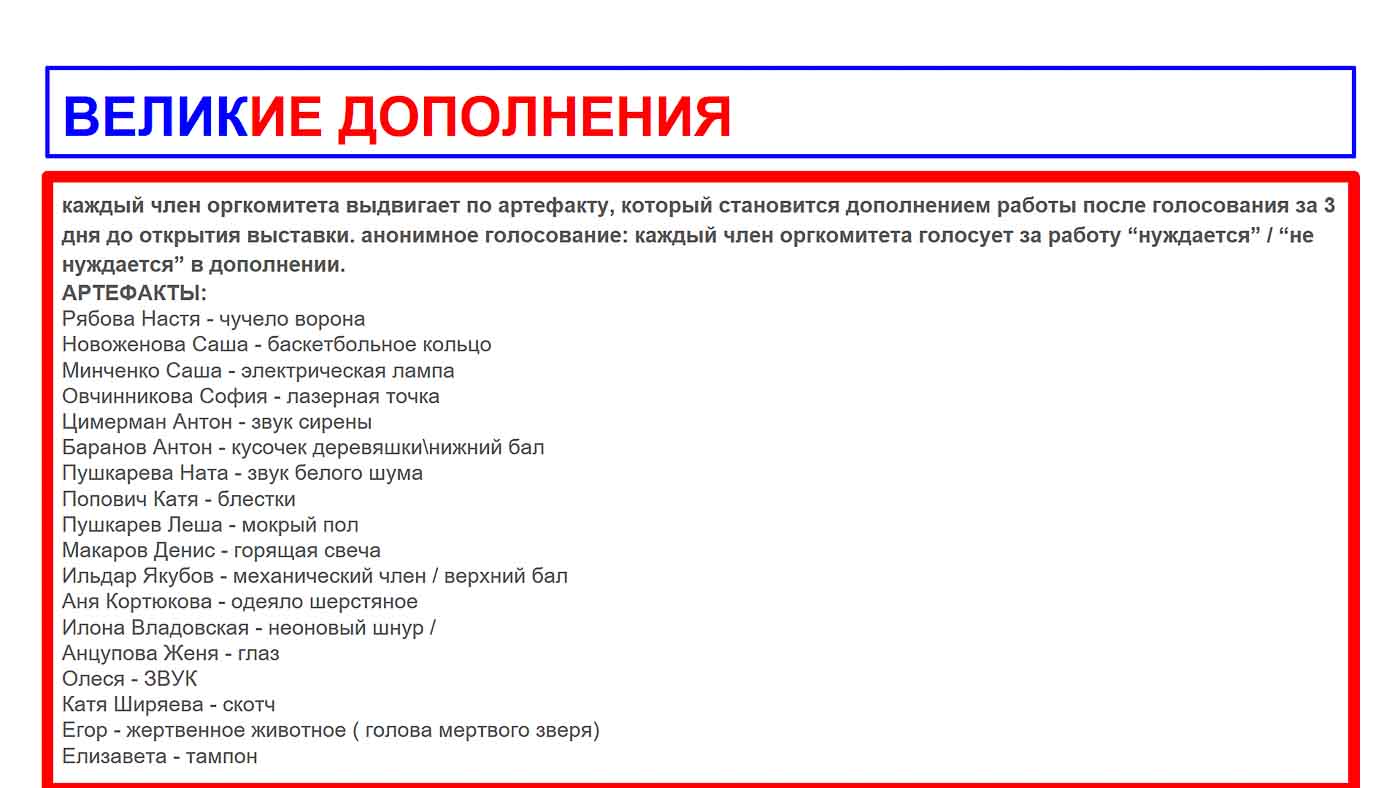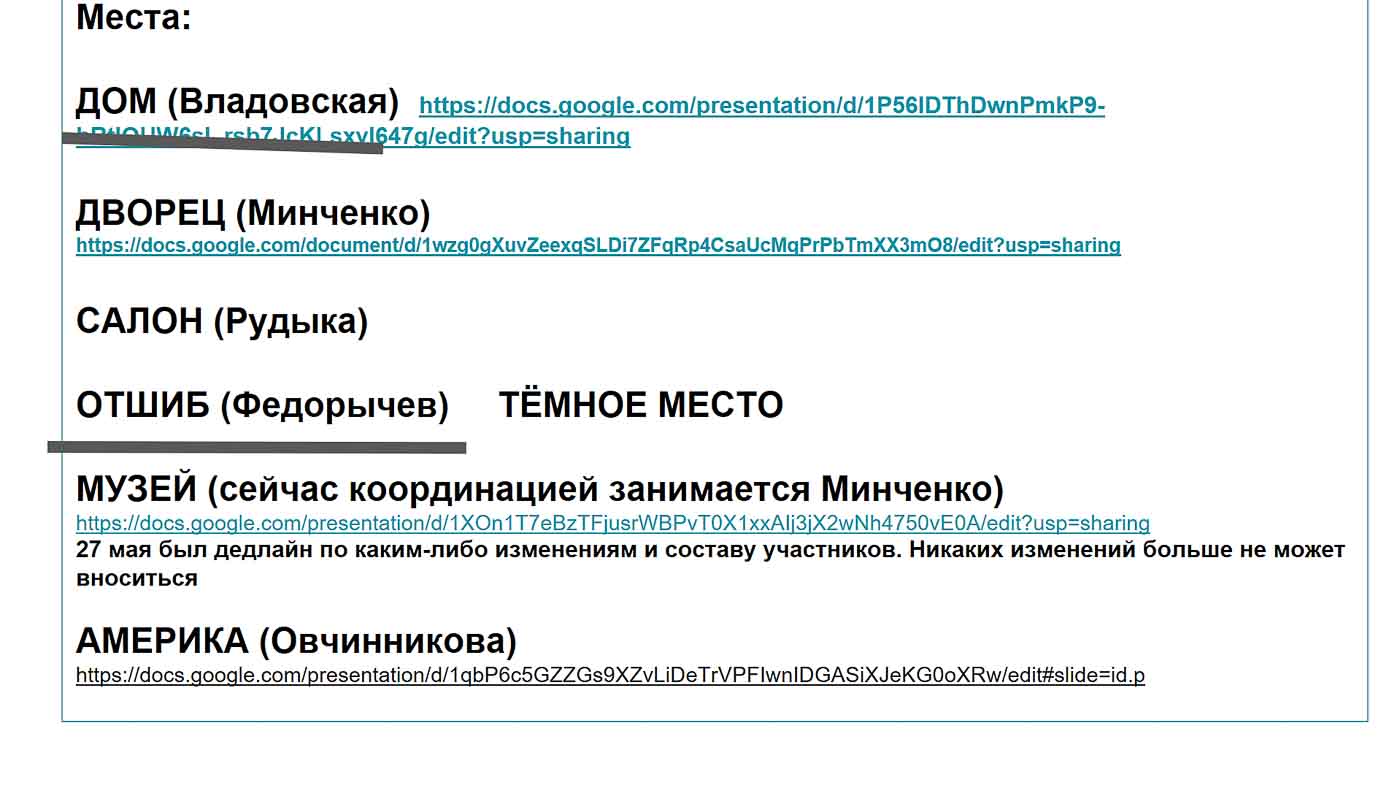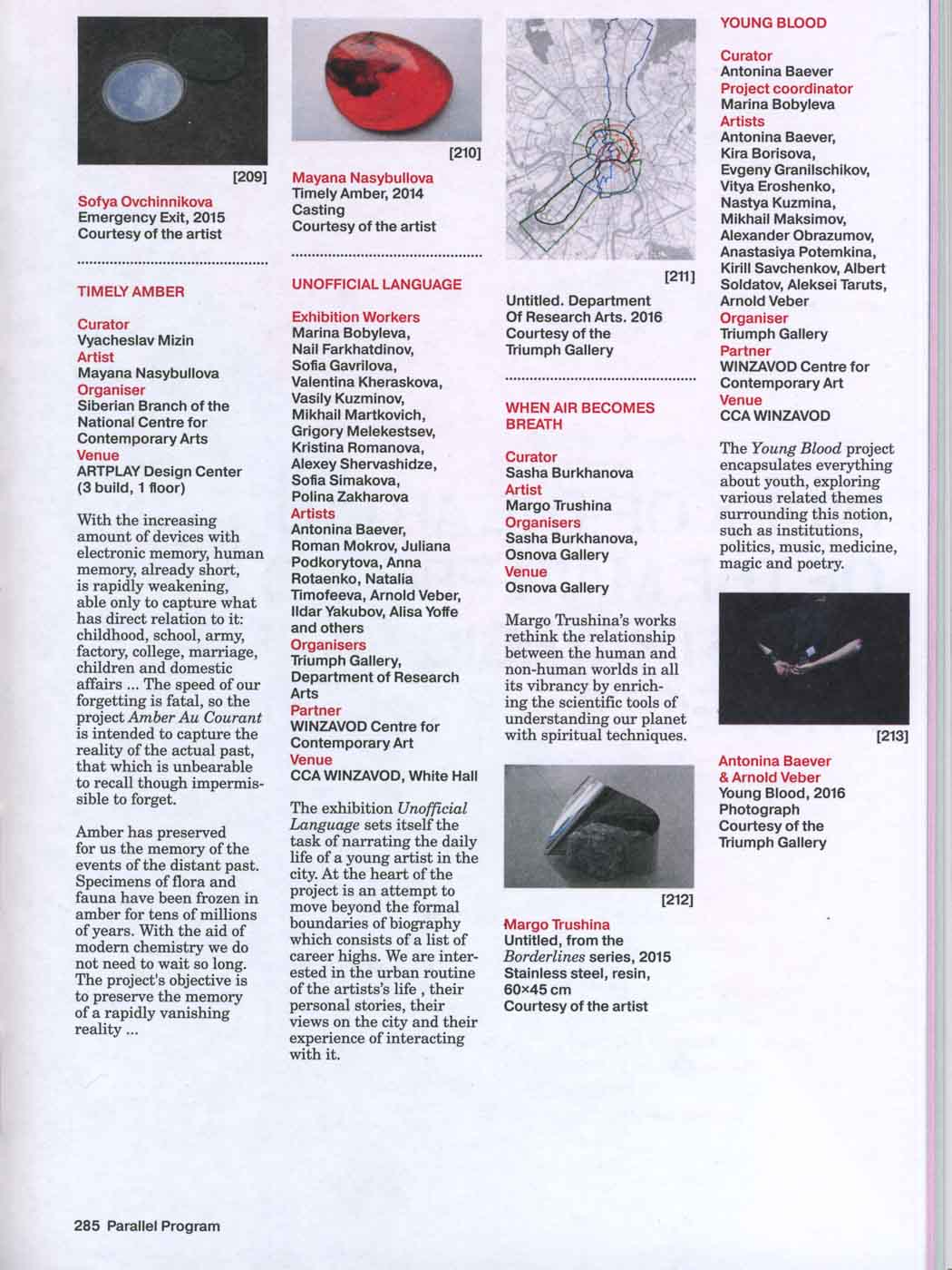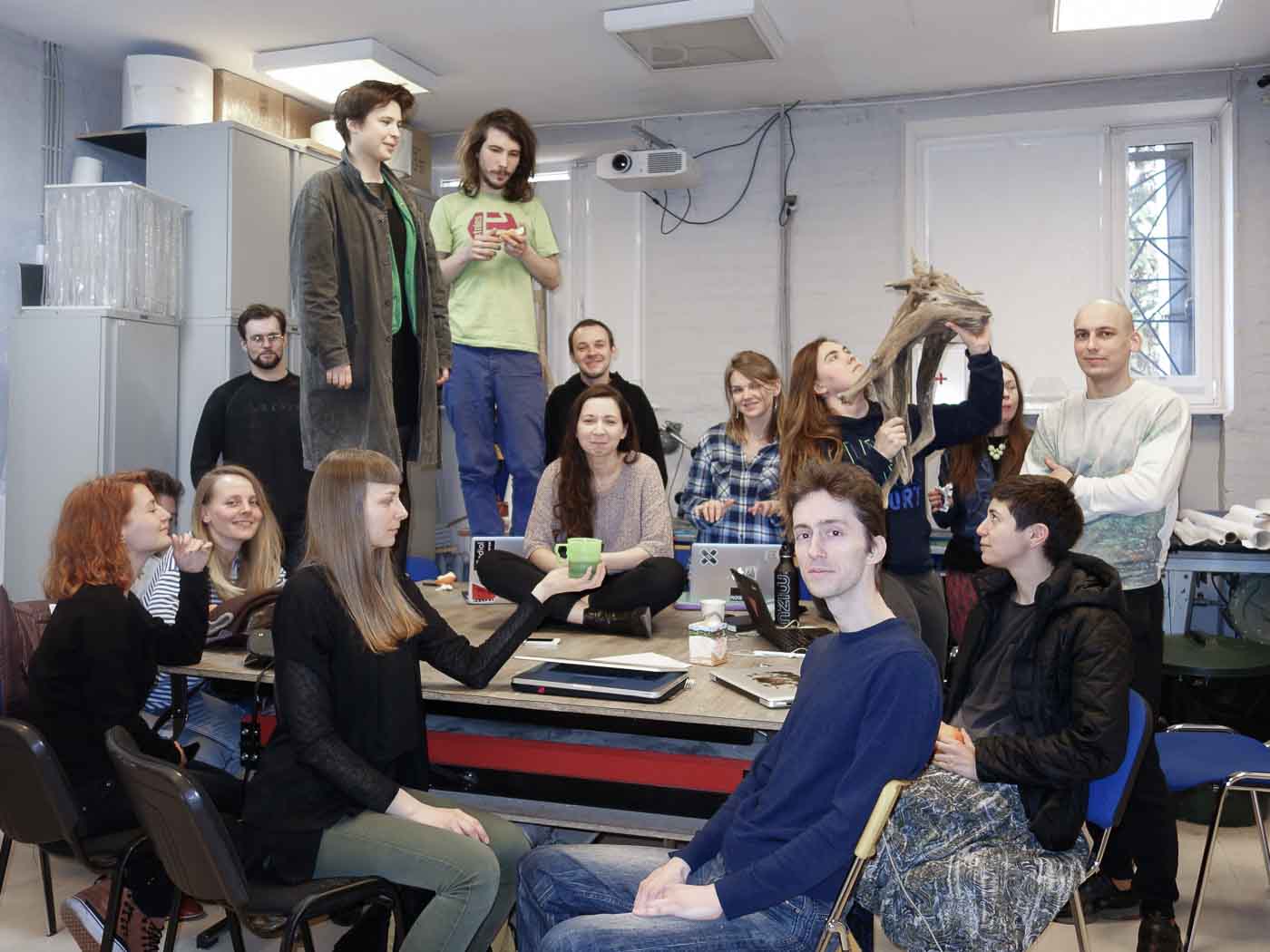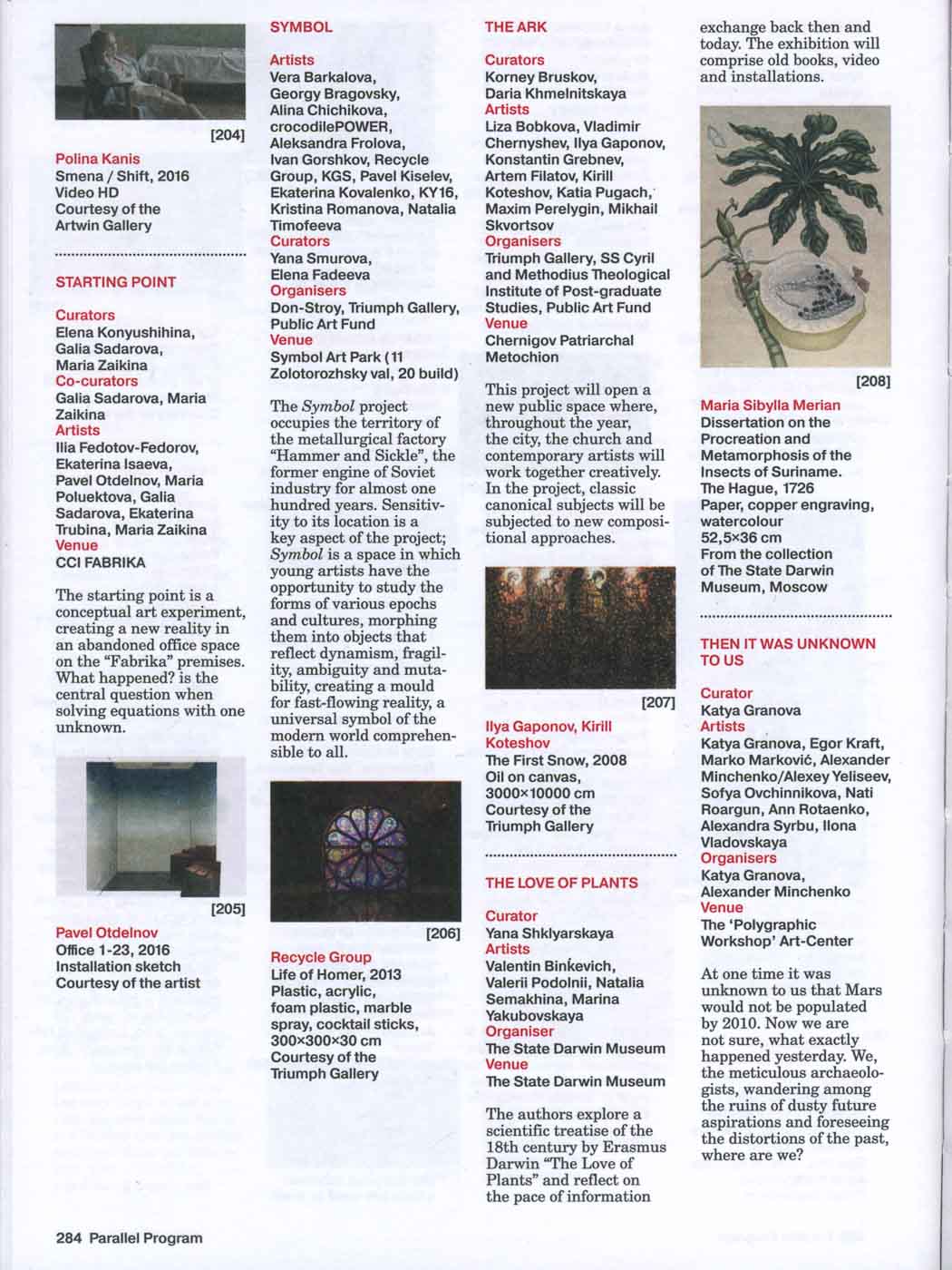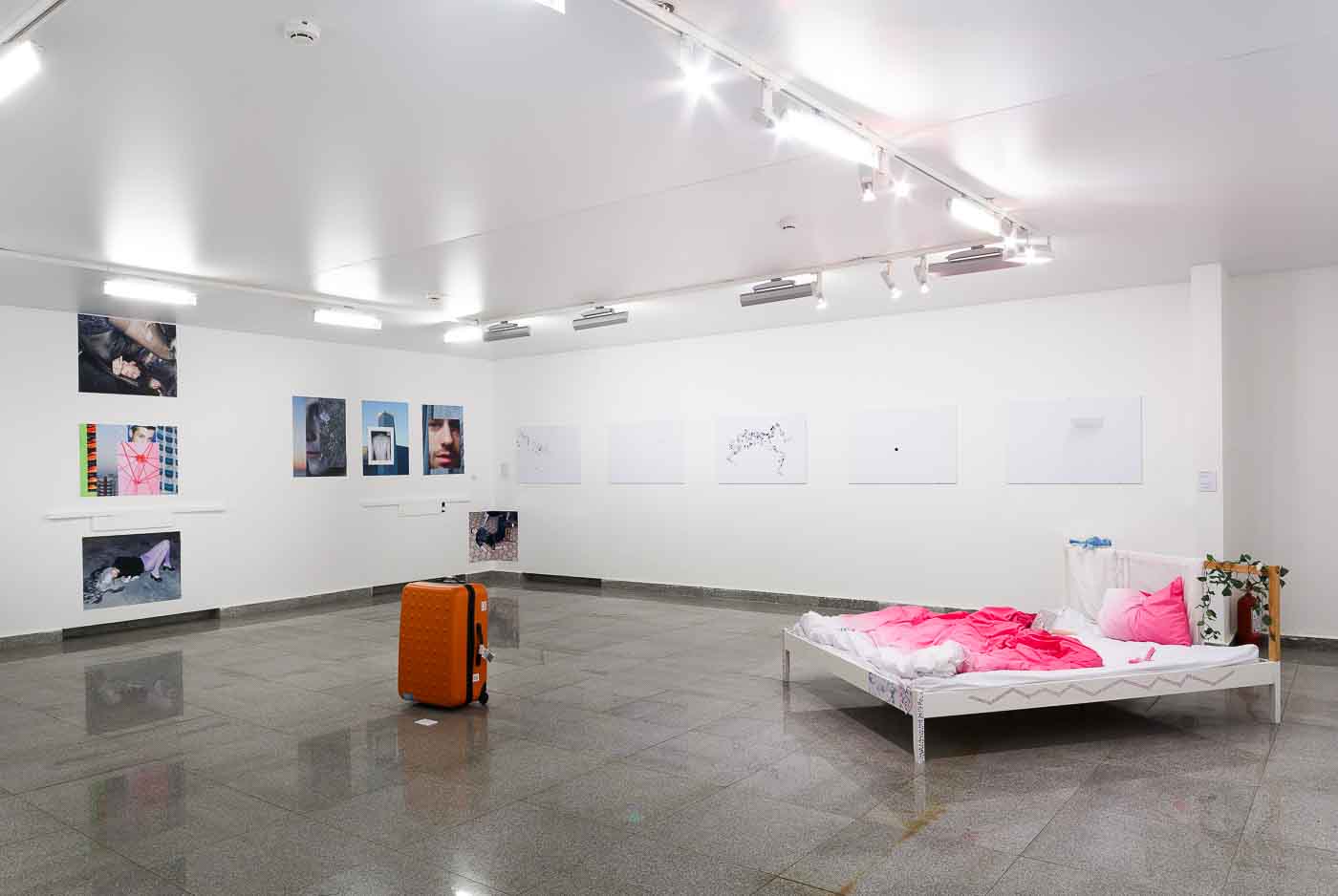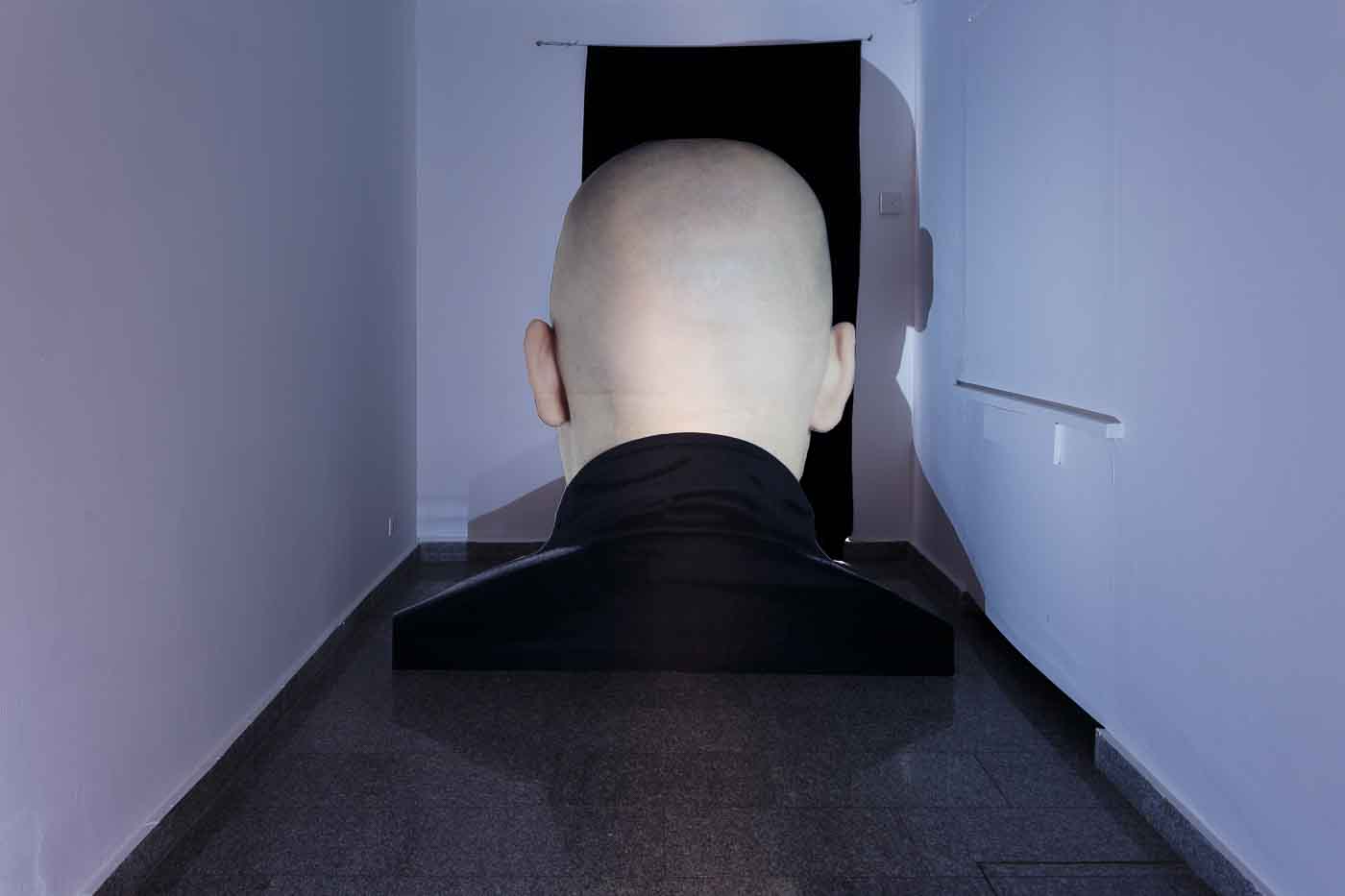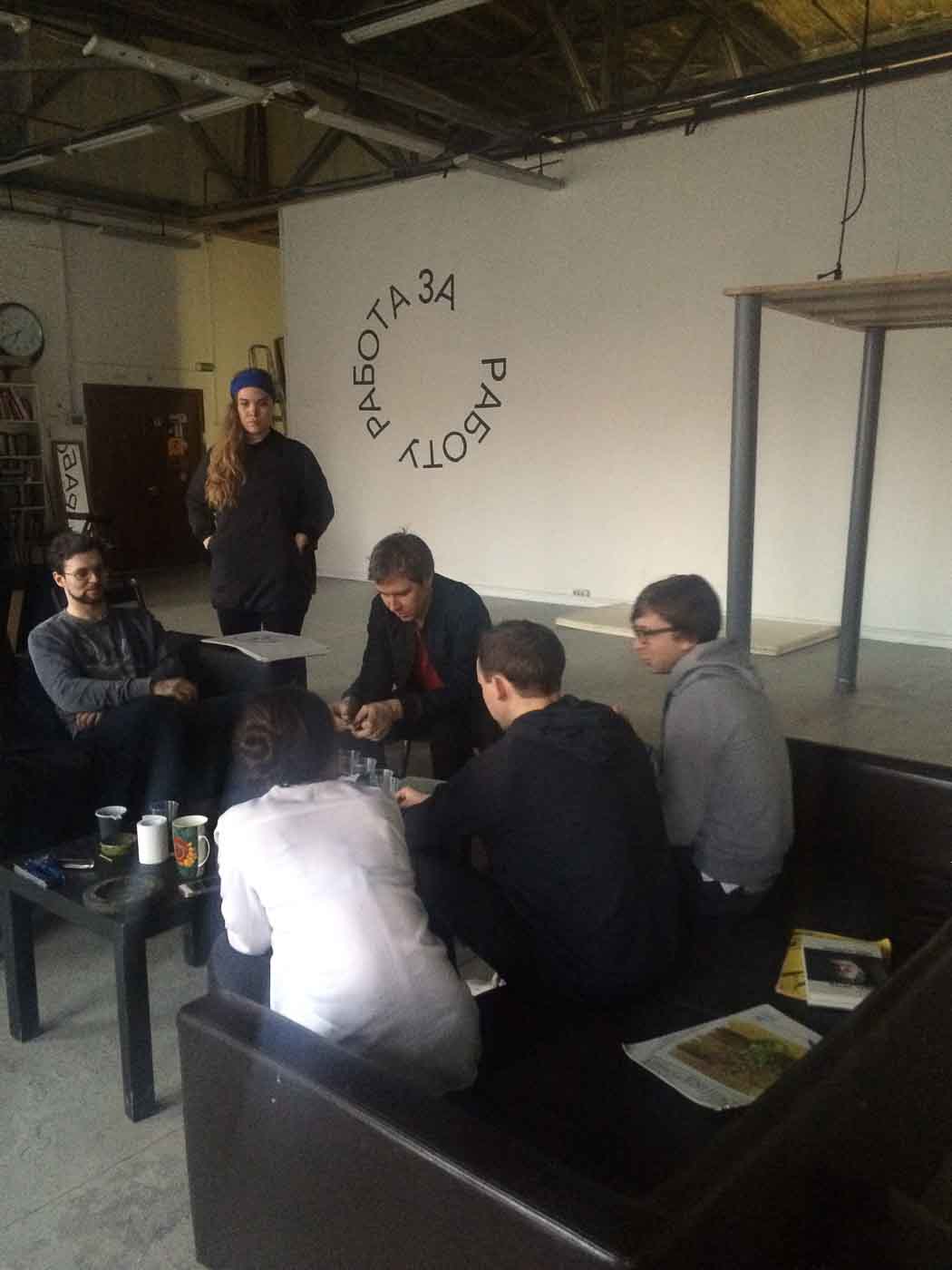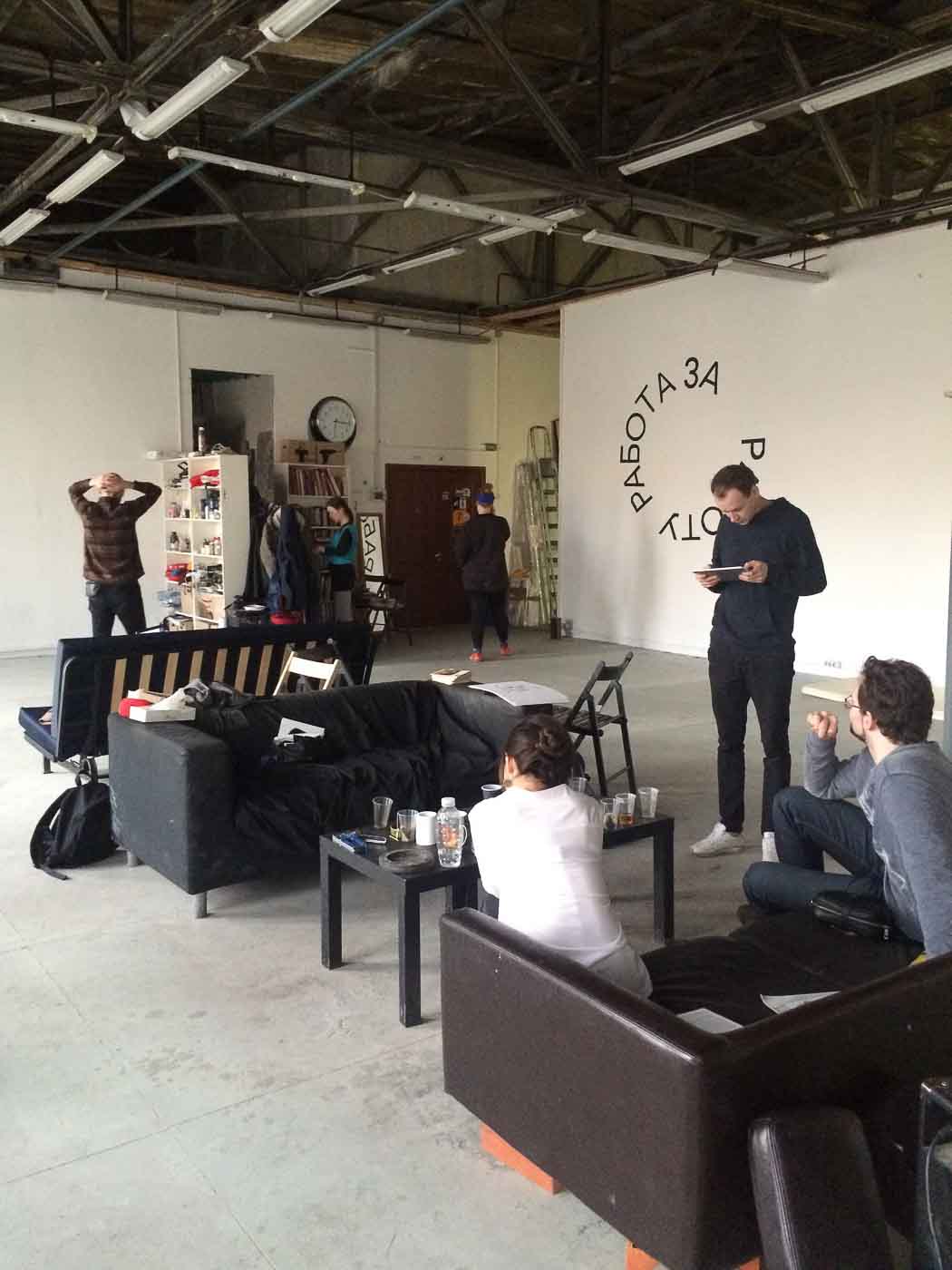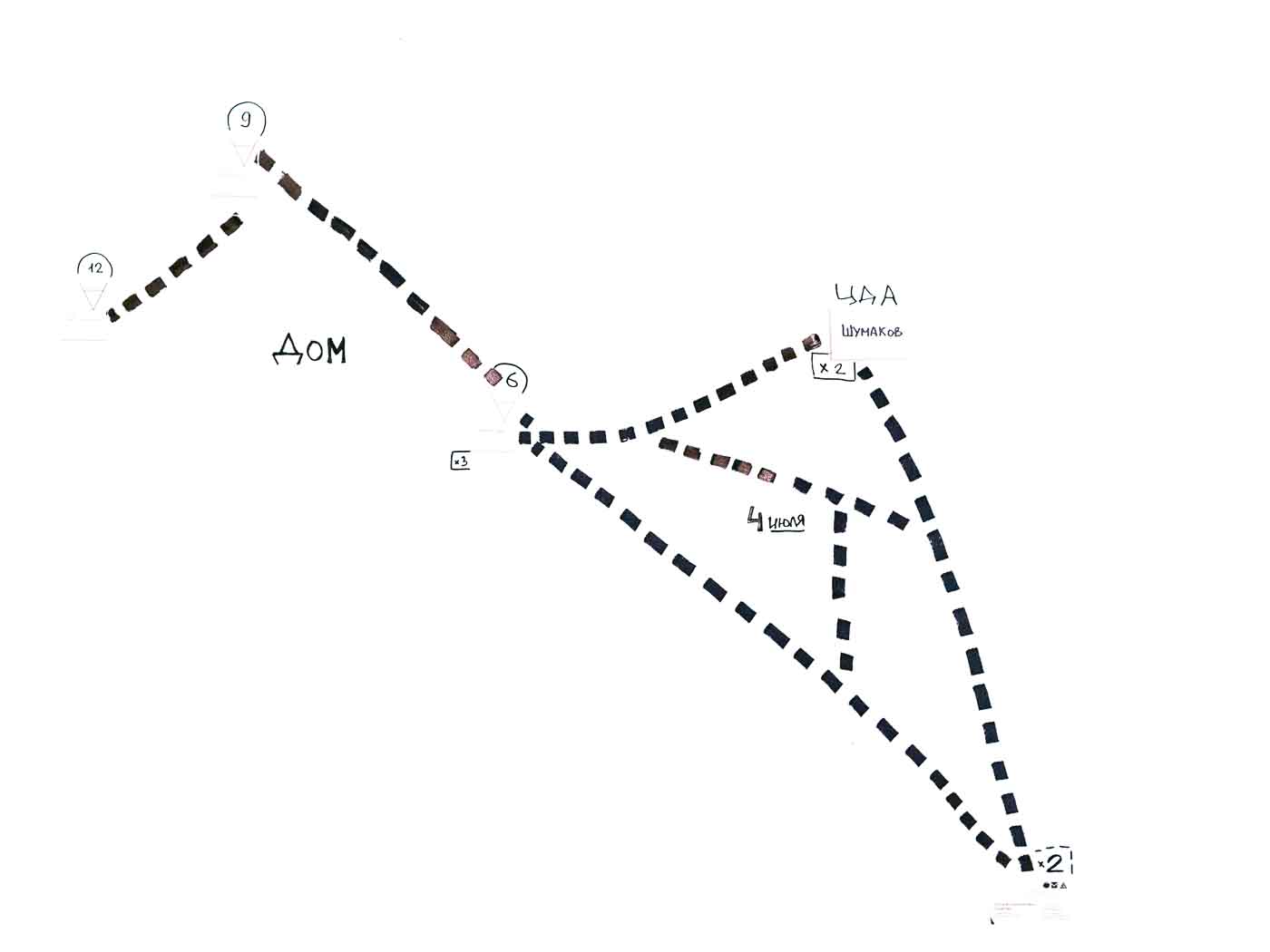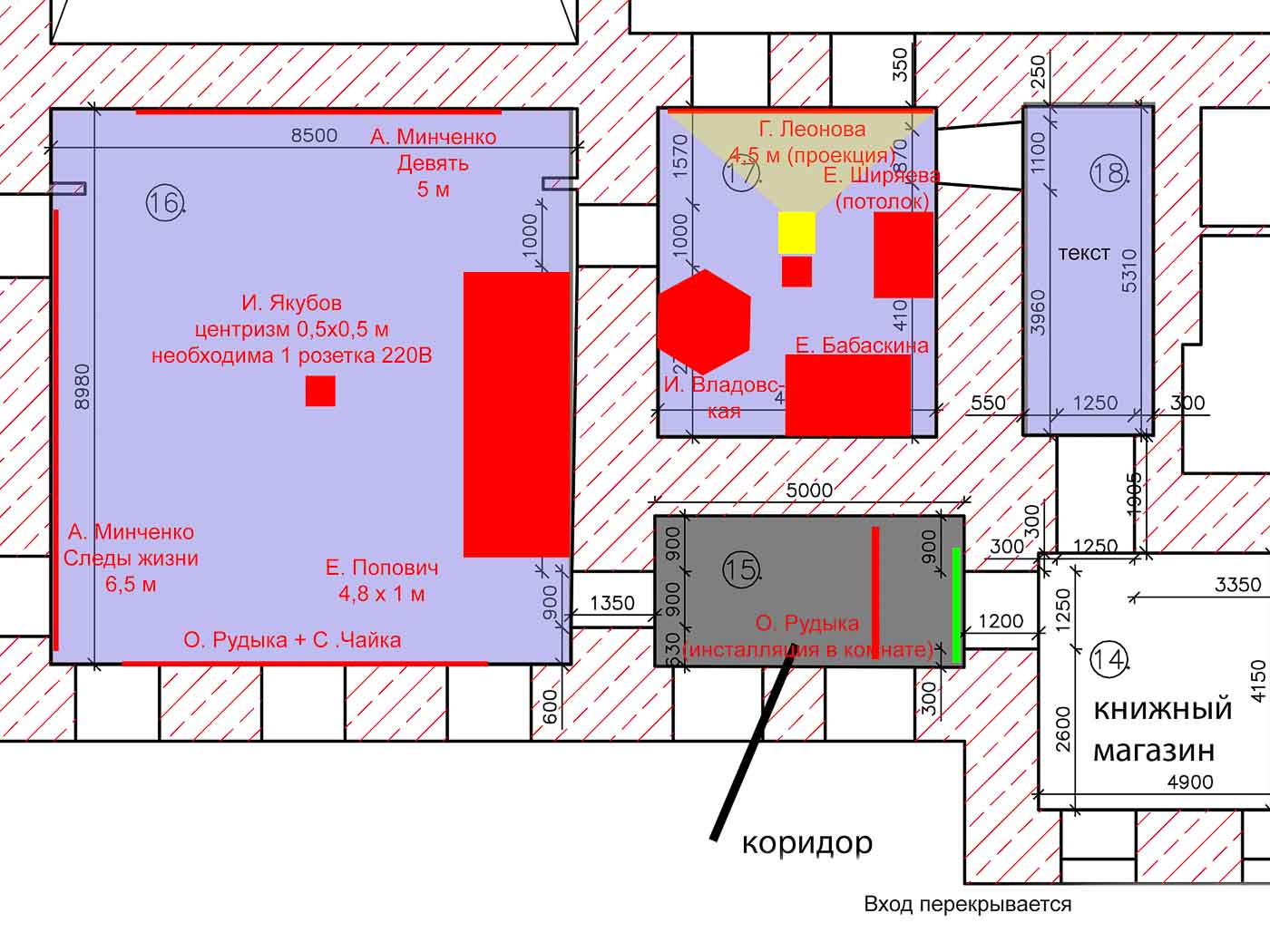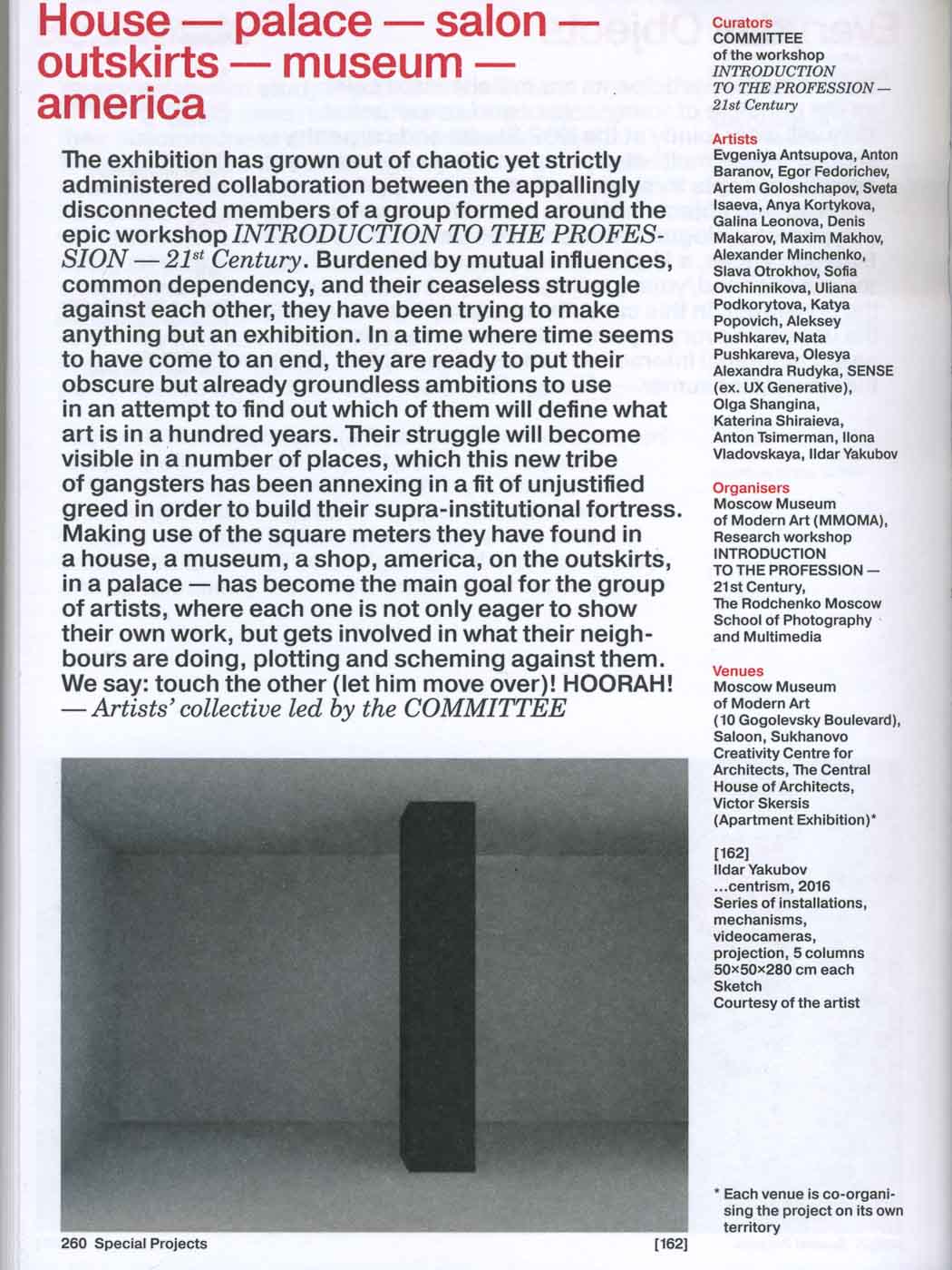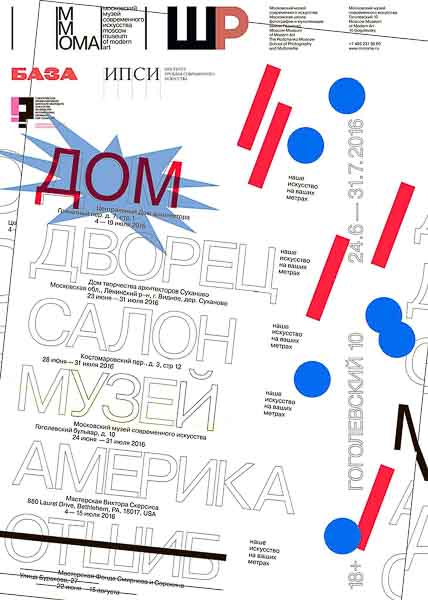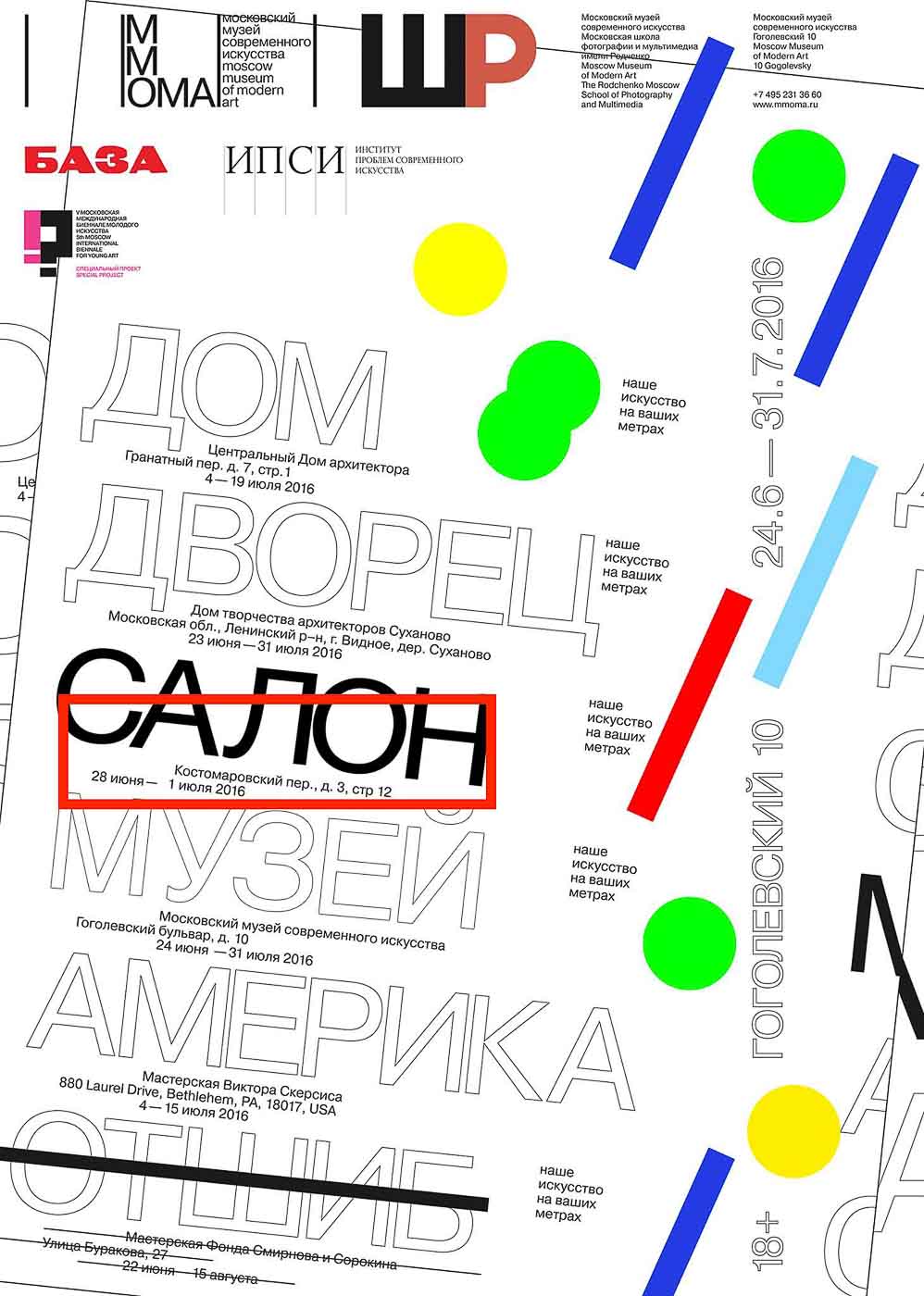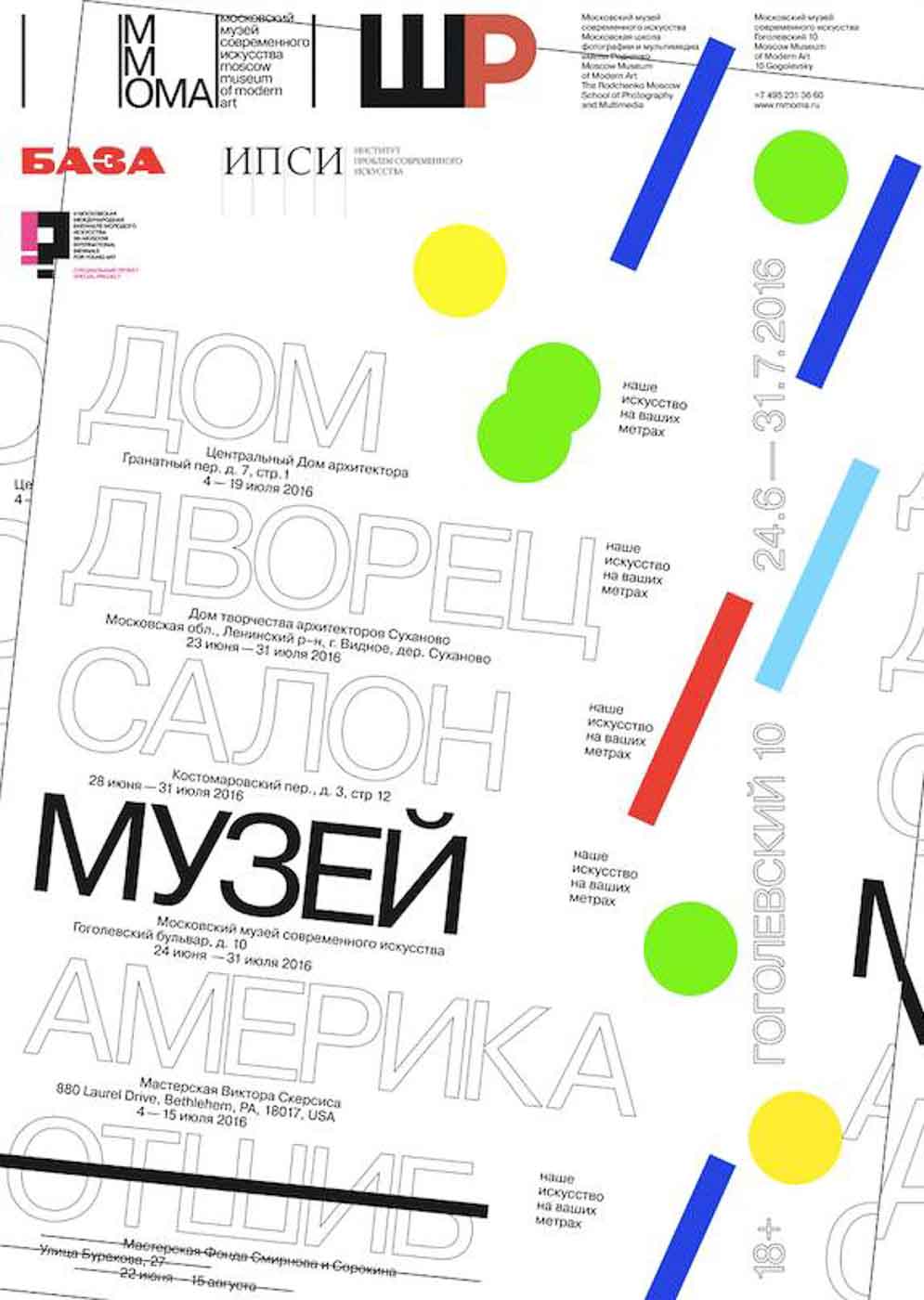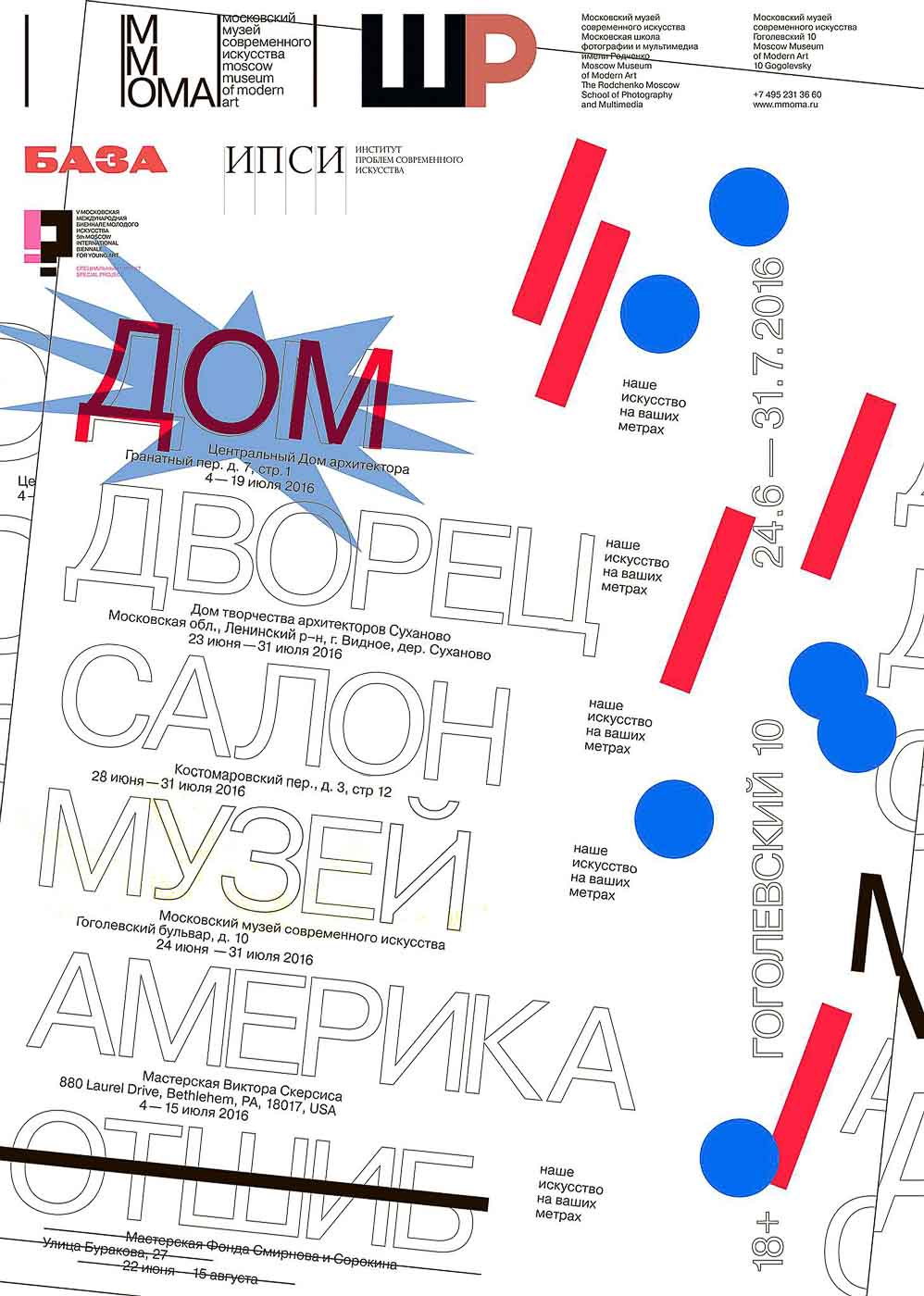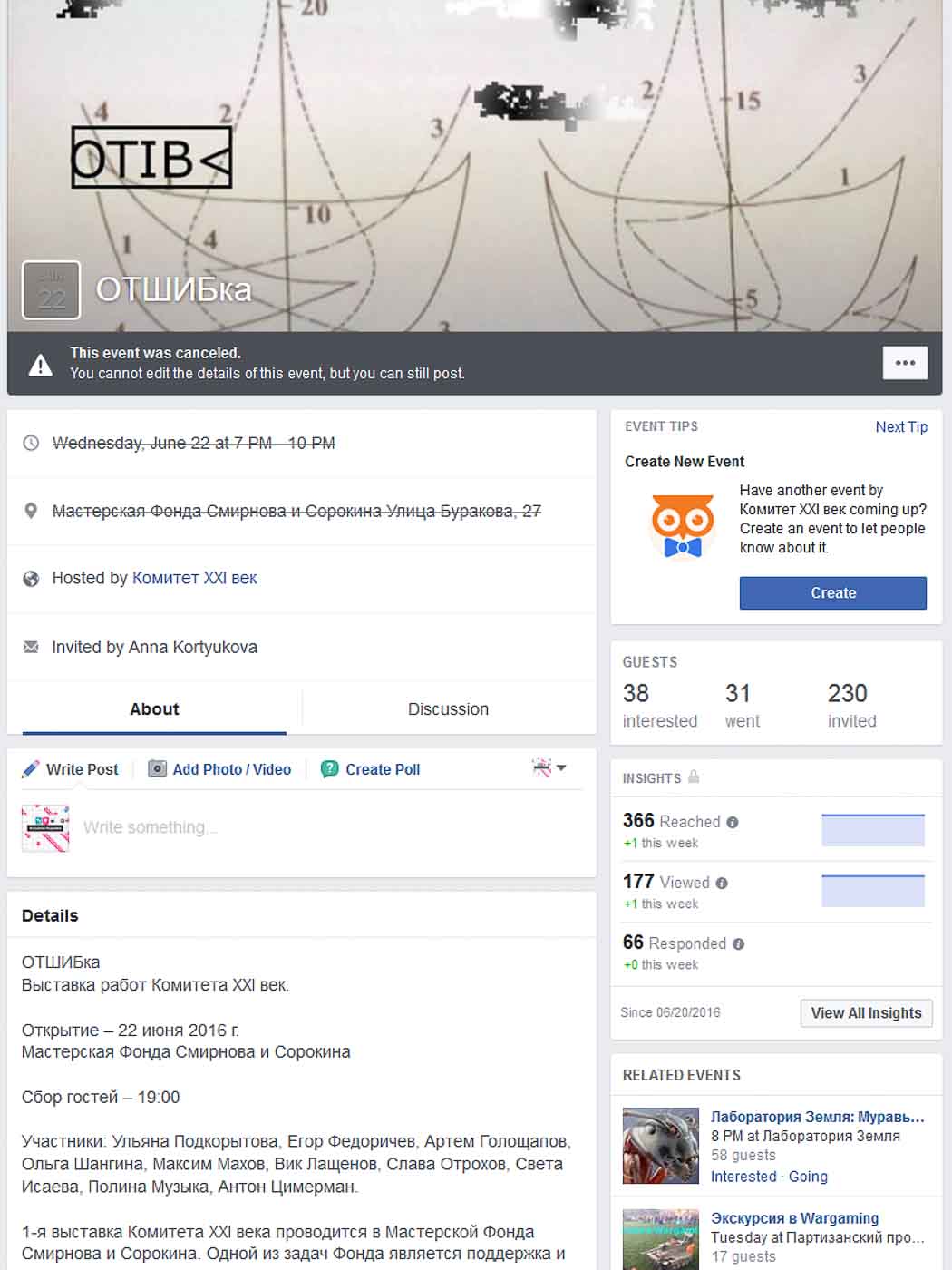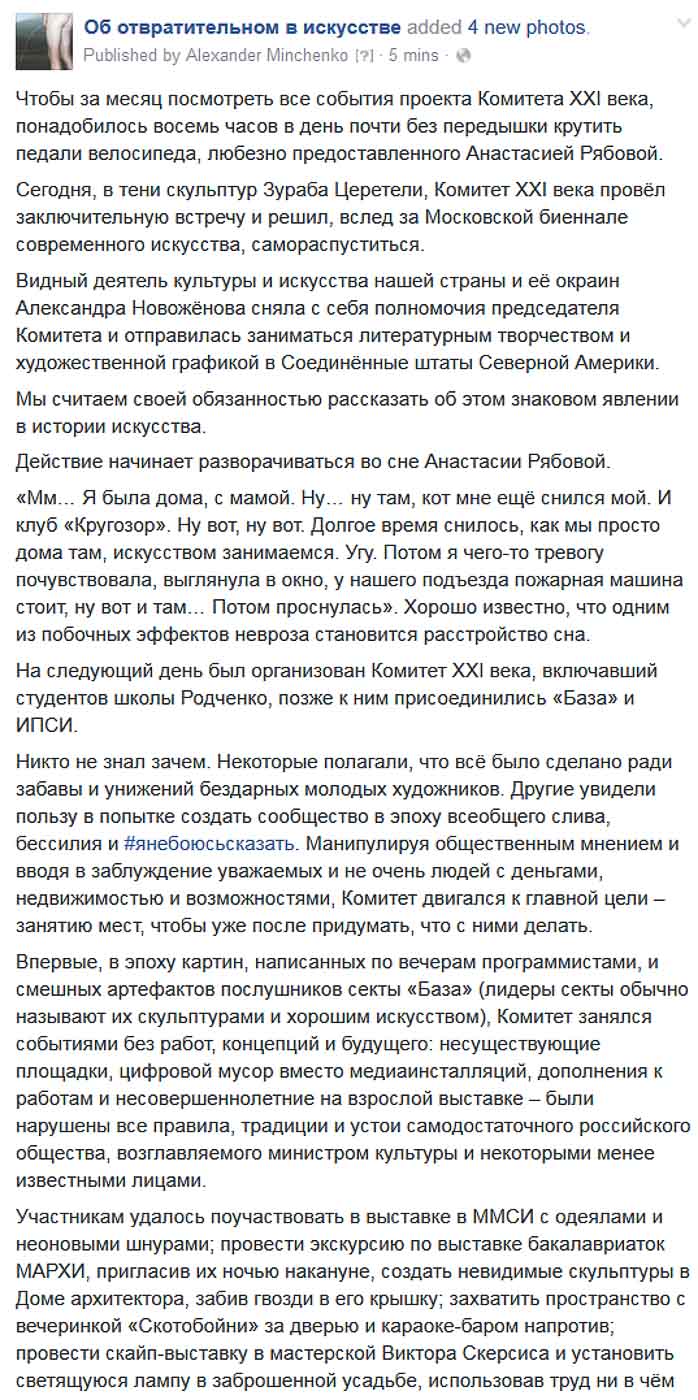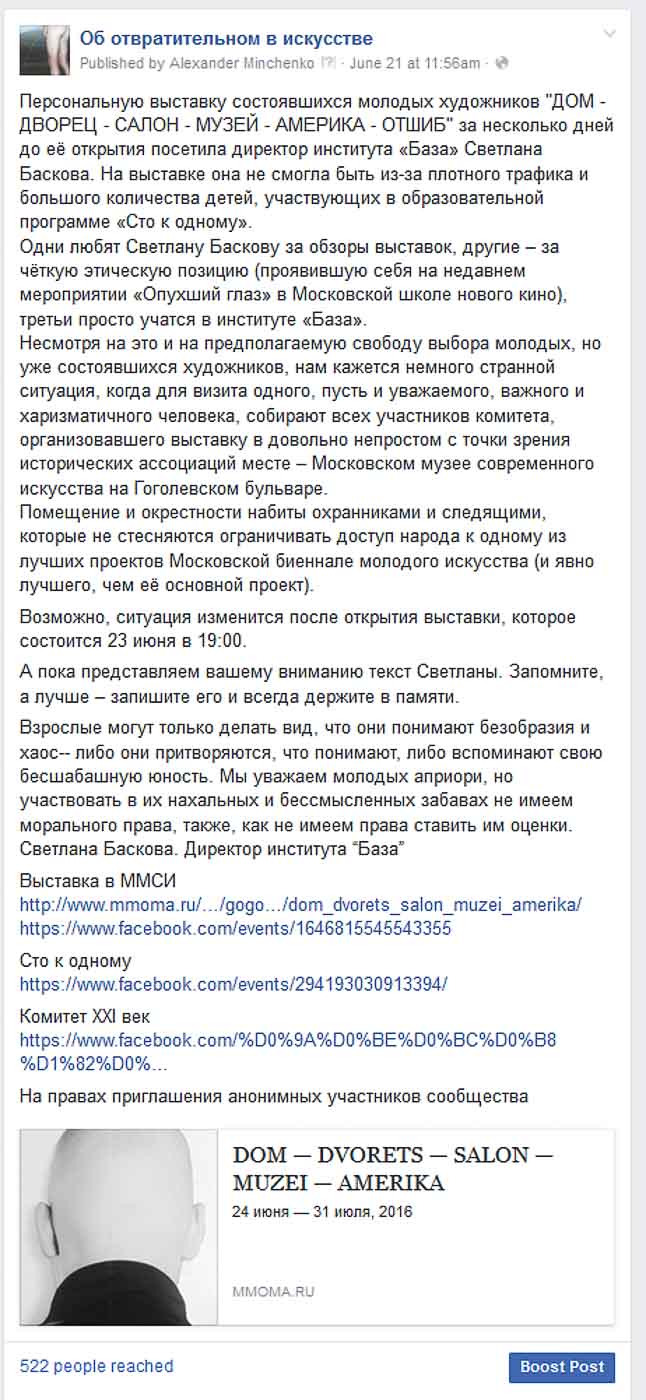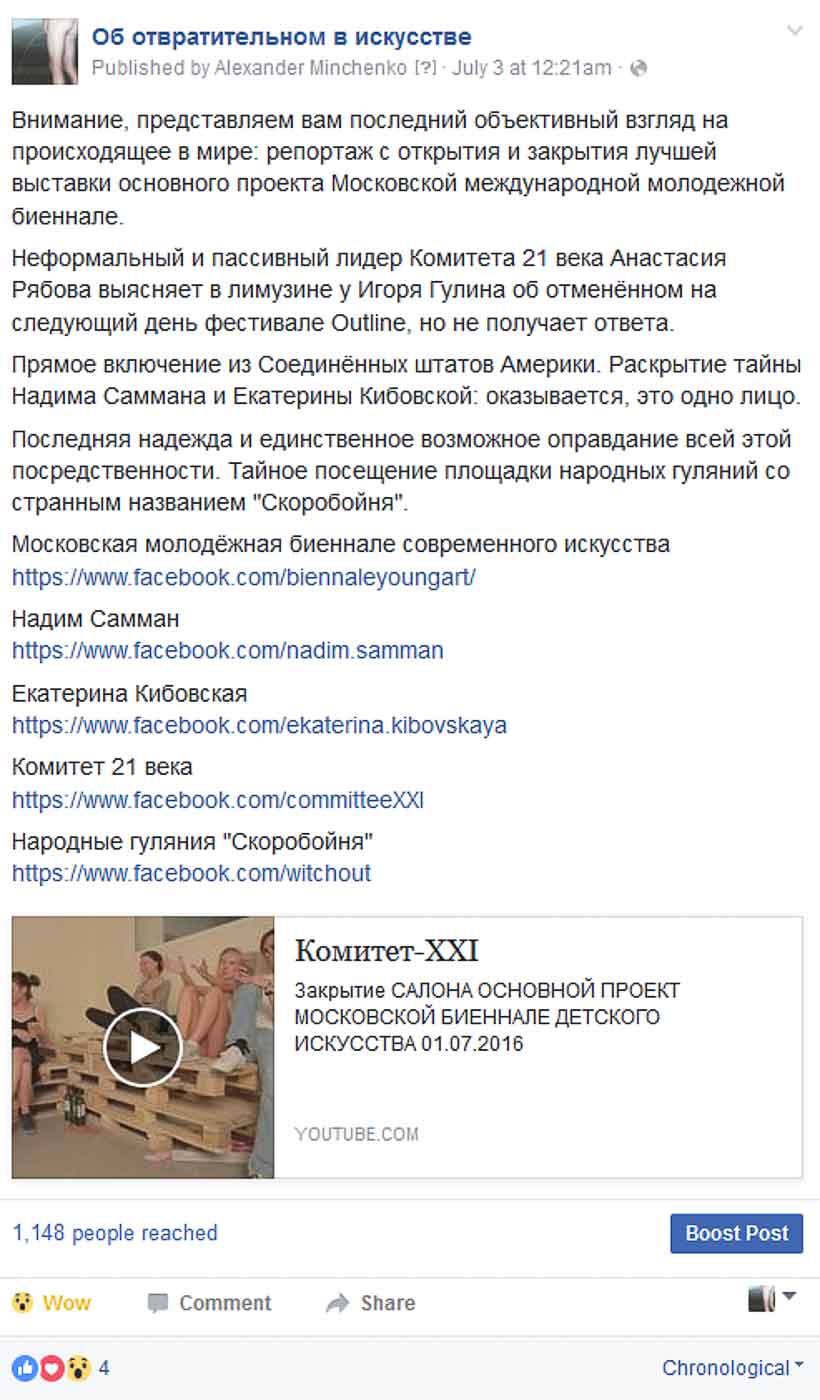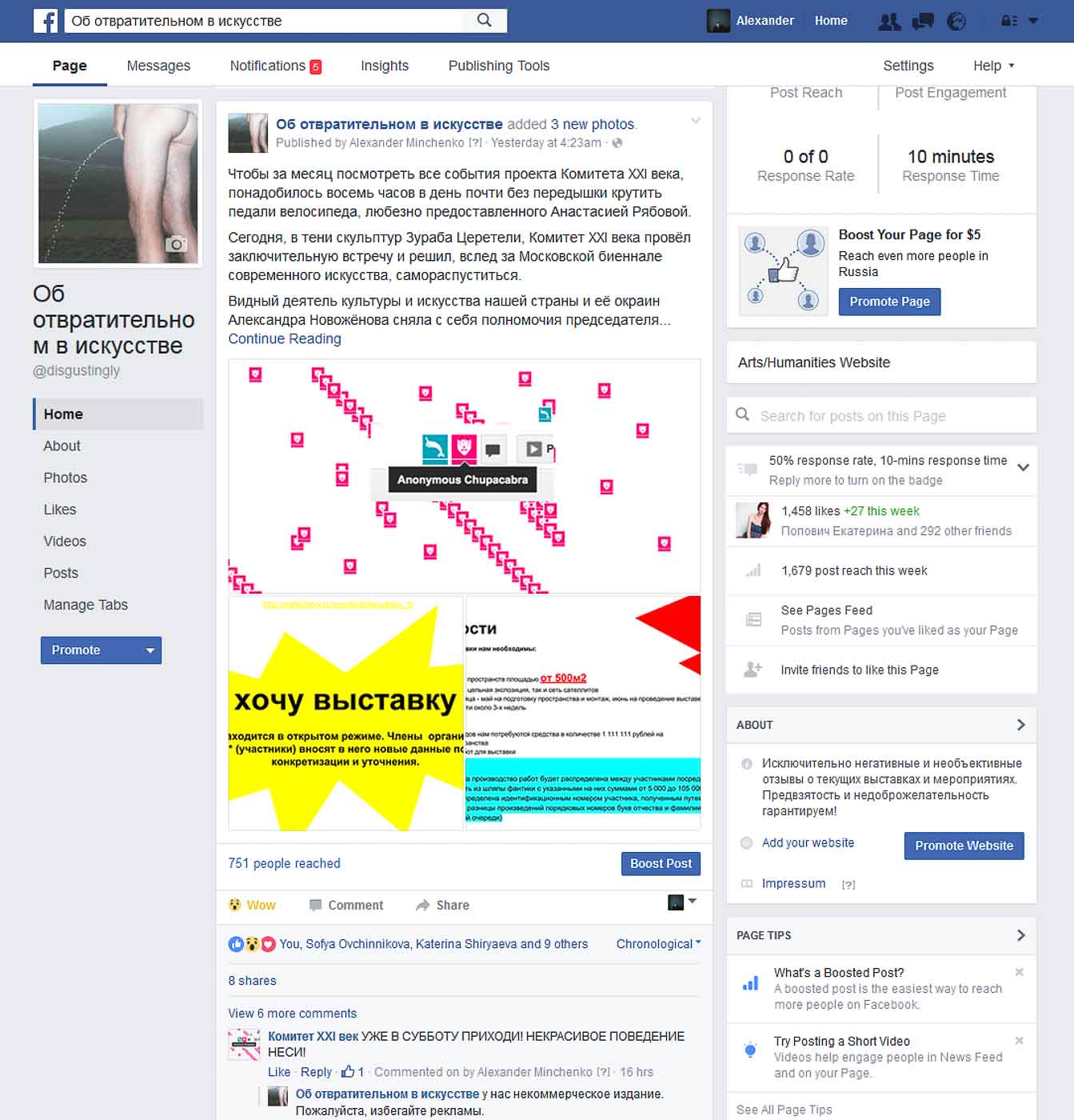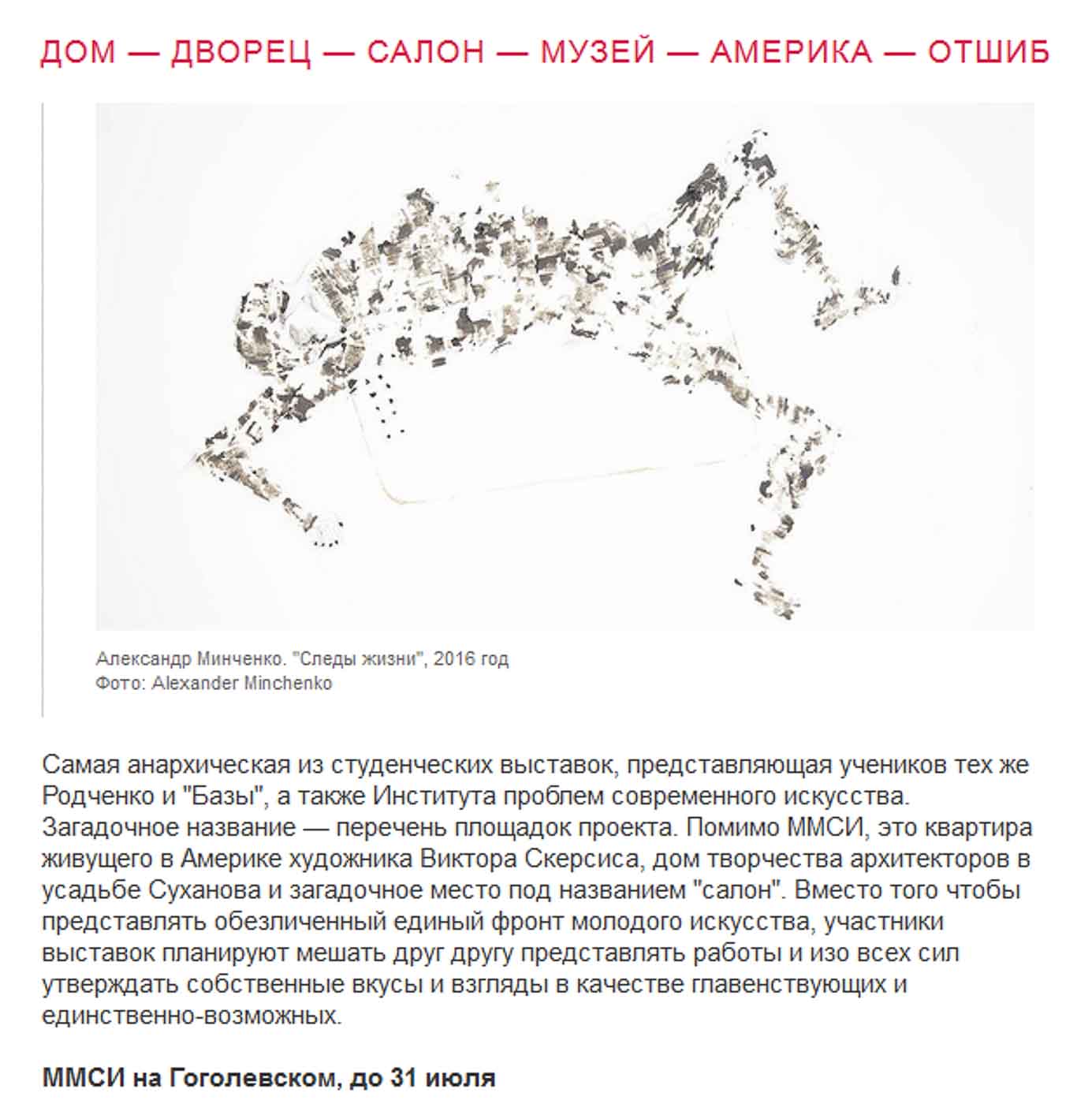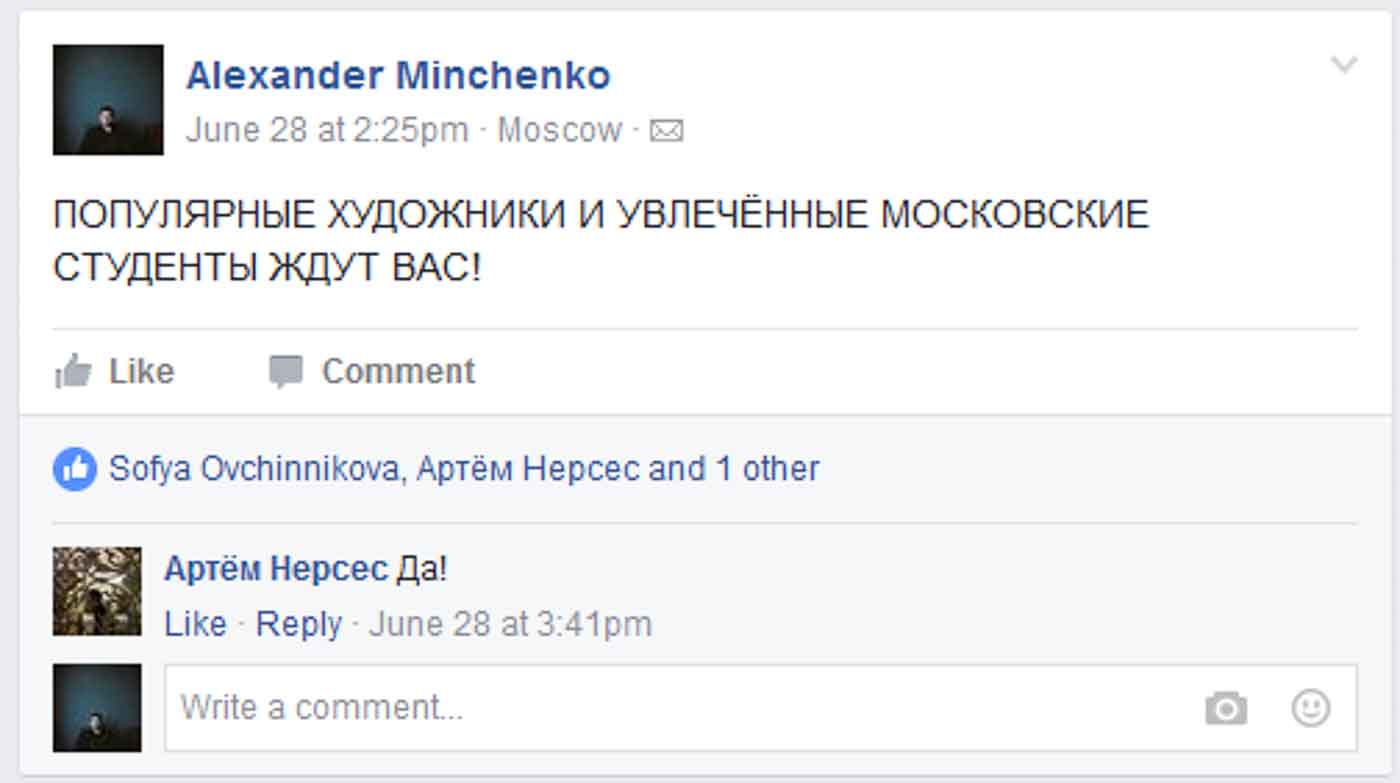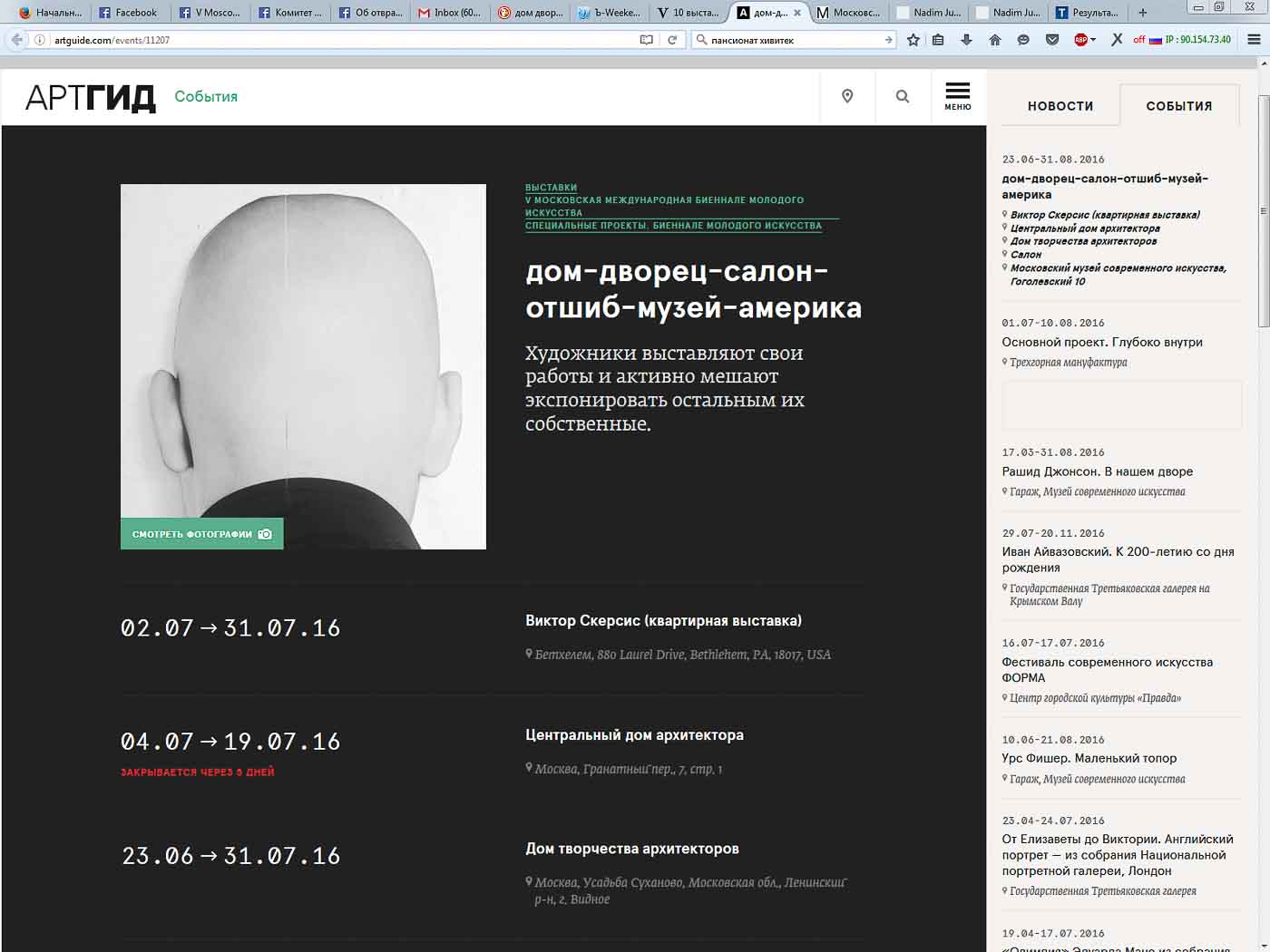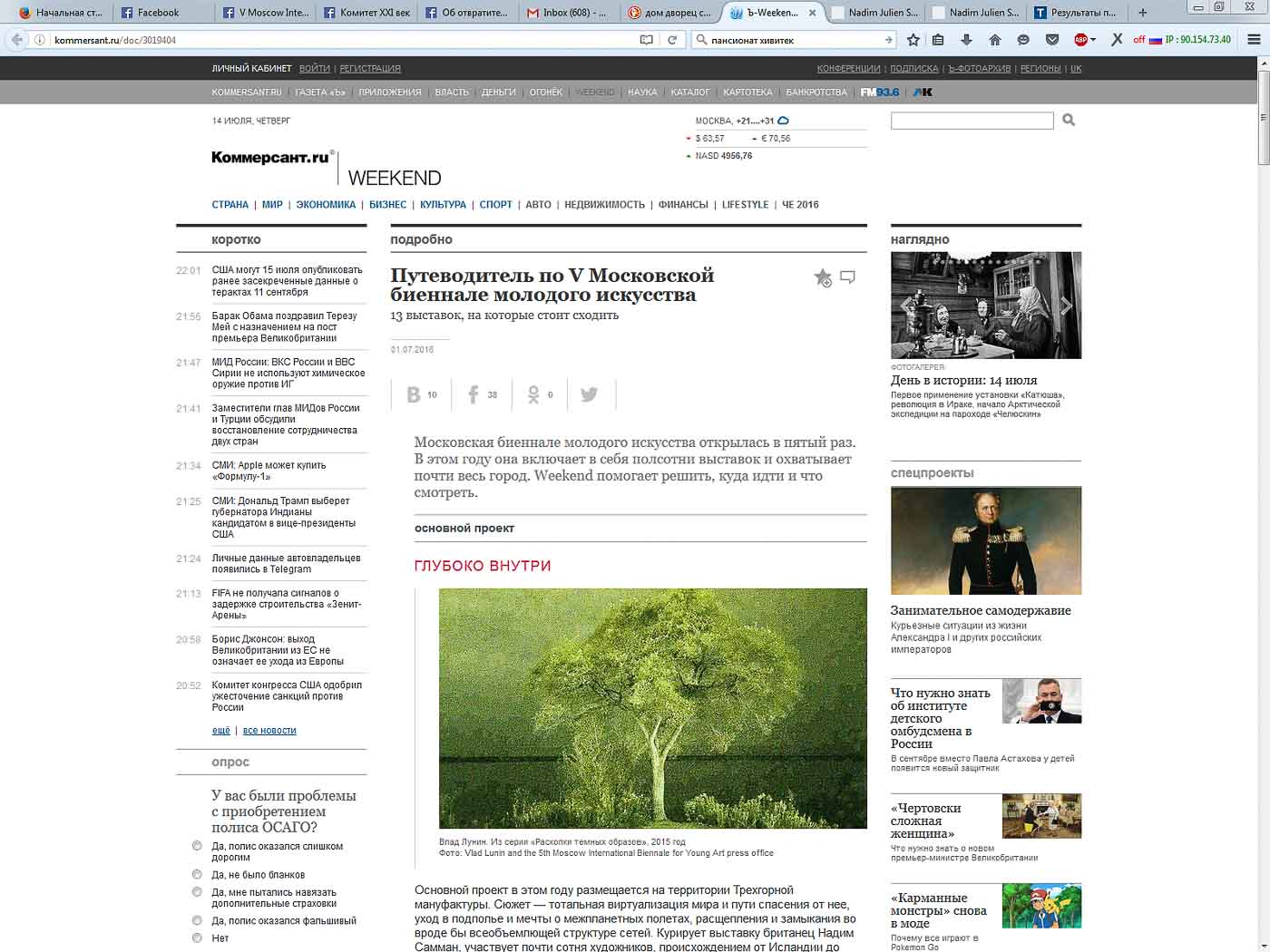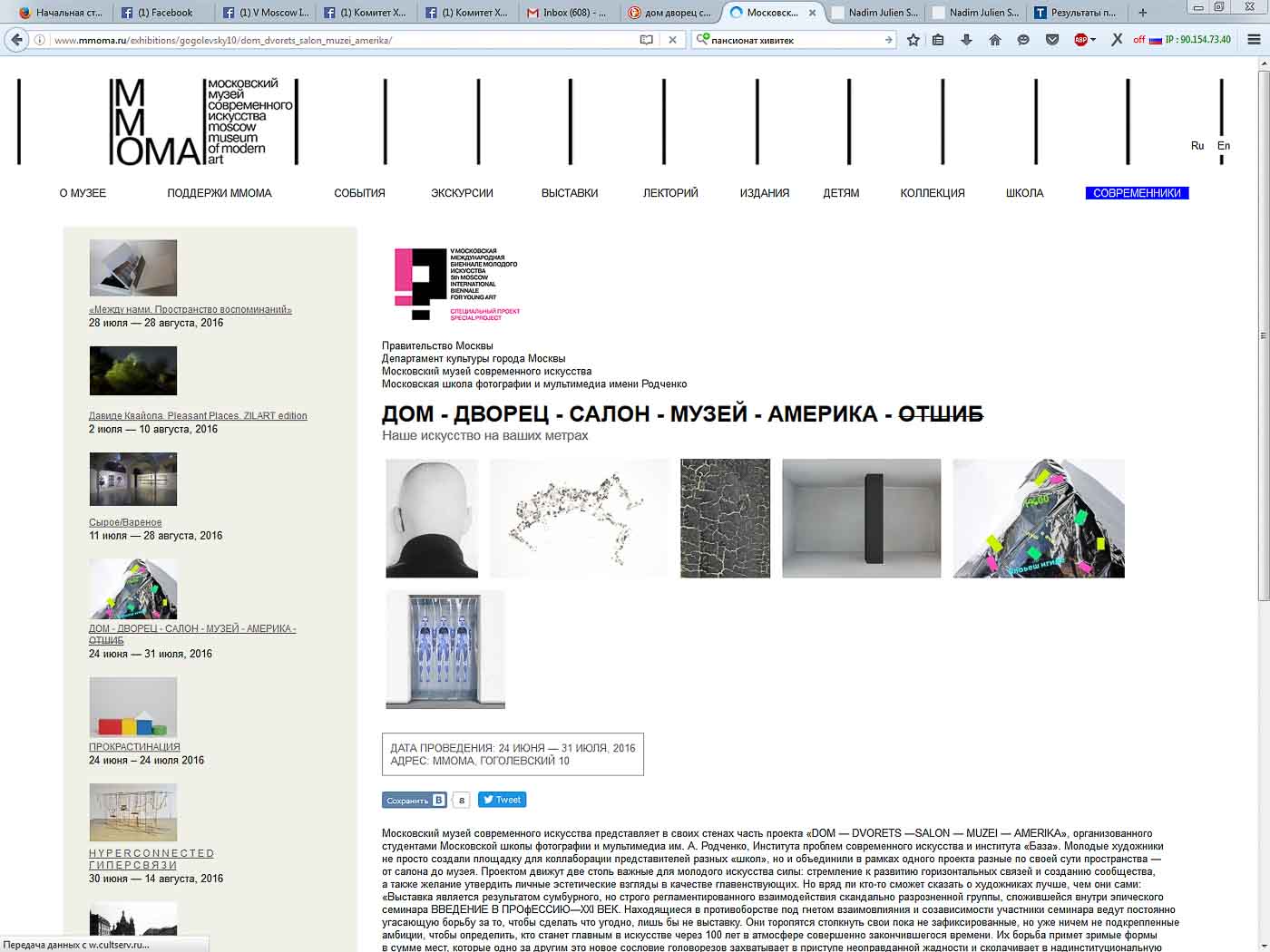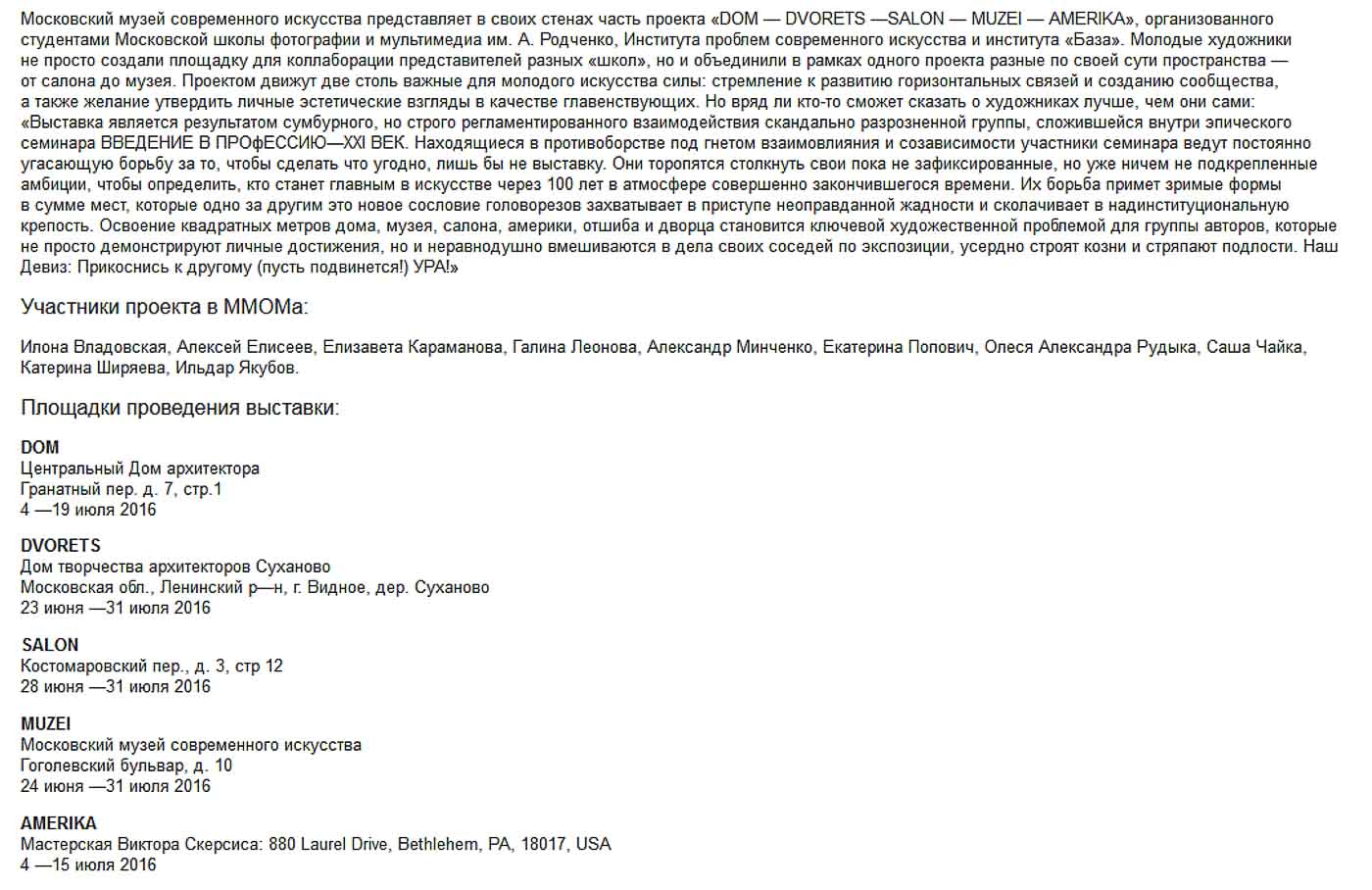The developed directive task – the reservation of the largest number of places and sites for the ‘cascade of exhibitions openings’ – was implemented with tools used by institutions, commercial and state companies to increase visitors loyalty, promote an imaginary product or service.
For the realization, several completely different sites were chosen in Moscow and the Moscow region: a music club, a skate park, the Central architects house (the ex-Soviet club of the professional community), a manor that became a boarding house, the weekend city festival ‘Forma’, the Moscow Museum of Modern Art , Workshops of the Smirnov and Sorokin art fund for the support of contemporary art, the apartment of the artist Viktor Skersis in the US.
Some of above mentioned places after a lengthy document circulations and talks turned out to be unavailable, and in some of them unauthorized actions were committed.
In 2015-2016, the completion of the process of turning museums into units of the cultural industry, using all means to attract and entertain visitors, has become noticeable in the flow of advertising content traffic generated in social networks and media. Promotion of events began to be made byadvertising and PR-agencies, without help of museum and gallery employees, as it was before, and visitors attendance numbers became the main index of event success.
In fact, the main form of art presentation has transformed into festivals, offering an excessive number of events in short time, evenly distributed across the city center area.
The period of activity of the Committee of the XXI century fell on the 5th Moscow Biennale for Young Art preparation and opening, and new tendencies of its promotion and structure led to the decision to “capture” the biennial media space with the use of both traditional and online media publications and high activity in the Facebook (which plays an important role in attracting visitors to entertainment, educational and artistic events in Russia in general).
In fact, the Committee worked as a kind of event-agency with the aim to provide good attendance and feedback for the project activities united under dom – dvorets – salon – muzei – amerika – otshib (house – palace – saloon – museum – america – offset) name, while striving:
– minimize the volume of created own content both in the form of artifacts (art objects at exhibitions) and in the hybrid information space (all publications were created automatically using a special script, mixing phrases and offering various information sources and key figures working in the cultural industry);
– fill in all reserved places (the volume is more important than the content);
– try not to have talks with site owners and curators about realized or fully prepared projects during the reservation of the places;
– provide the maximum conversion into visitors with the help of advertising material.
It should be noted that because of the large number of the Committee participants, the ratio and degree of inclusion varied. Some regarded it as a project of a “serious” exhibition planning, some as an art project by Ryabova and Novozhenova.
All various types of activity, many of which ended with the end of the action in one place or another, can be represented with a single tool – the process documentation, because the actions were not originally aimed at the final state in which a work of art or tangible result appears.
The project management, which aims to find means and other resources to promote events, is perhaps the main result of the Committee activities and the only work of art presented during its functioning.
